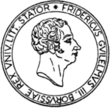Why are there African masks in the Arithmeum, alongside the latest supercomputers? Does that not entail an inherent contradiction? Shiny metal, modern materials, polished silicon and highly sophisticated technology next to roughly worked old wood, archaic masks with a ritual significance: is there a connection? Viewed superficially, none is apparent, but upon deeper analysis one finds many different connections. The African masks of the late 19th and early 20th centuries arose out of the creative talents inherent in the traditional cults. A deep respect for the power and wisdom of the forefathers resulted in ancestor-worship in the form of rituals by means of which one hoped to tap their wisdom and preserve it for generations to come. Thus the creative wish to form these imposing archaic masks resulted out of a profound reverence for the ancestors and their wisdom, not just while they lived but also in the spirit world. In these African masks, the above basic geometric shapes have been used with an intuitive feeling for size, relationship and composition, and with totally differing compositional weightings in the different masks. The circle, for example, is always used as an element which points towards a centre. In the case of the Kifwebe ceremonial mask from Zaire, the circles direct one’s entire attention towards the slit-eyes, from which the spirit of the ancestor is expected to flash. In the case of the Bedu mask, on the other hand, the circle encloses that which is revealed behind the mask, here the white color of the wall but in a ritual dance most likely the color of the sky. The stripes on the ring go outwards radially like the rays of the sun and again emanate from the centre of the enclosed circular view of the background. Thus we see that a more thorough view leads to a fascinating connection between mathematics in a wider sense, in particular geometry, and these artifacts of archaic cultures. Both realms, science and art, are able to apprehend these shapes: the scientist by intellectual analysis and the artist by intuitive comprehension. As this example shows, science and art unite to provide a holistic view of the essence of things.






